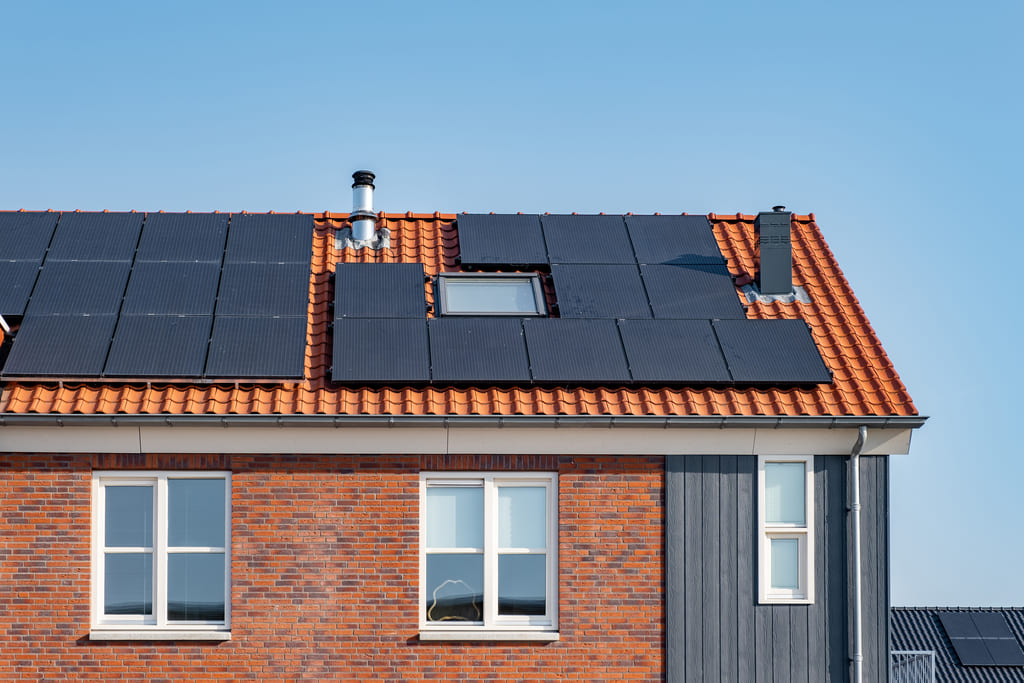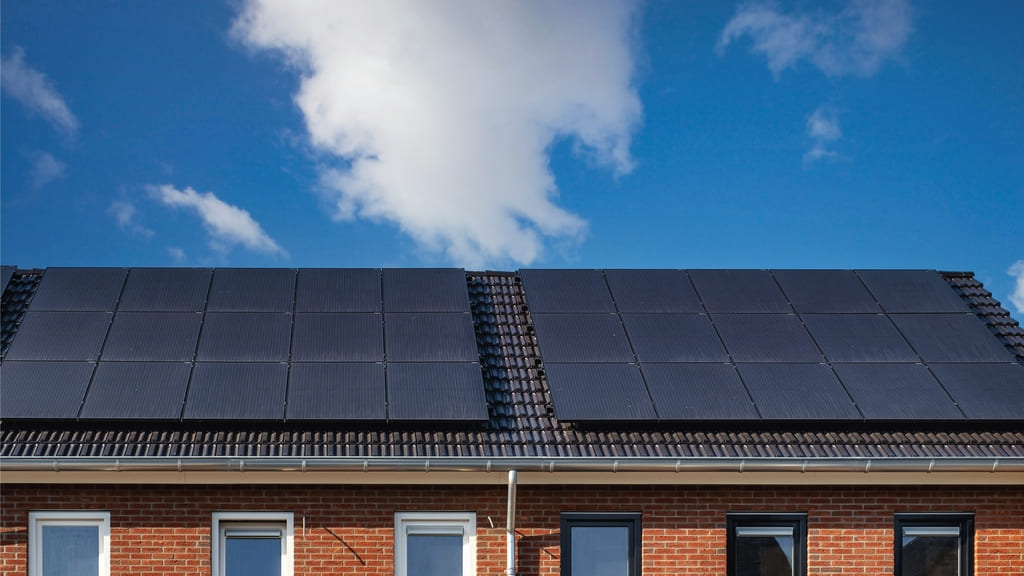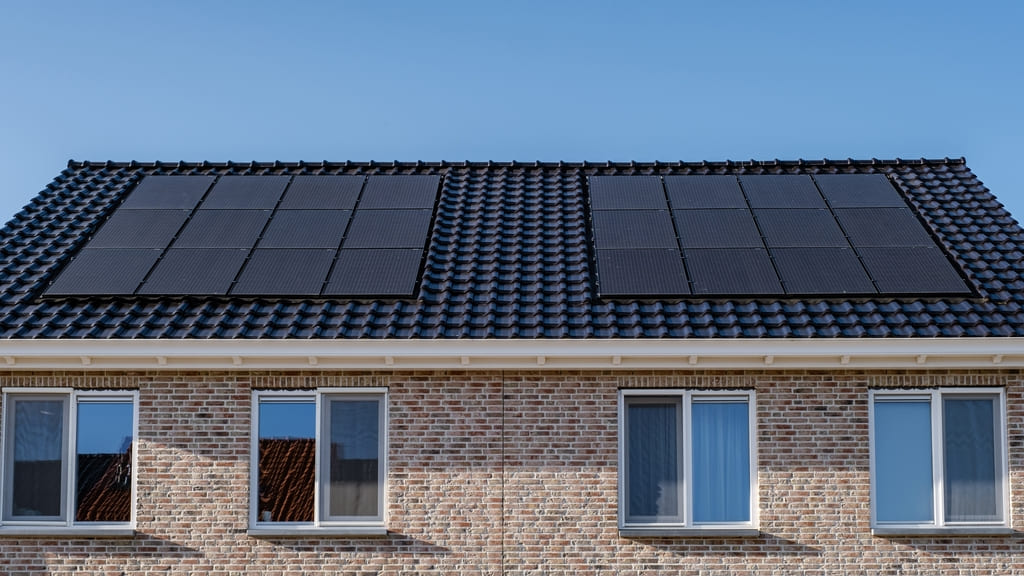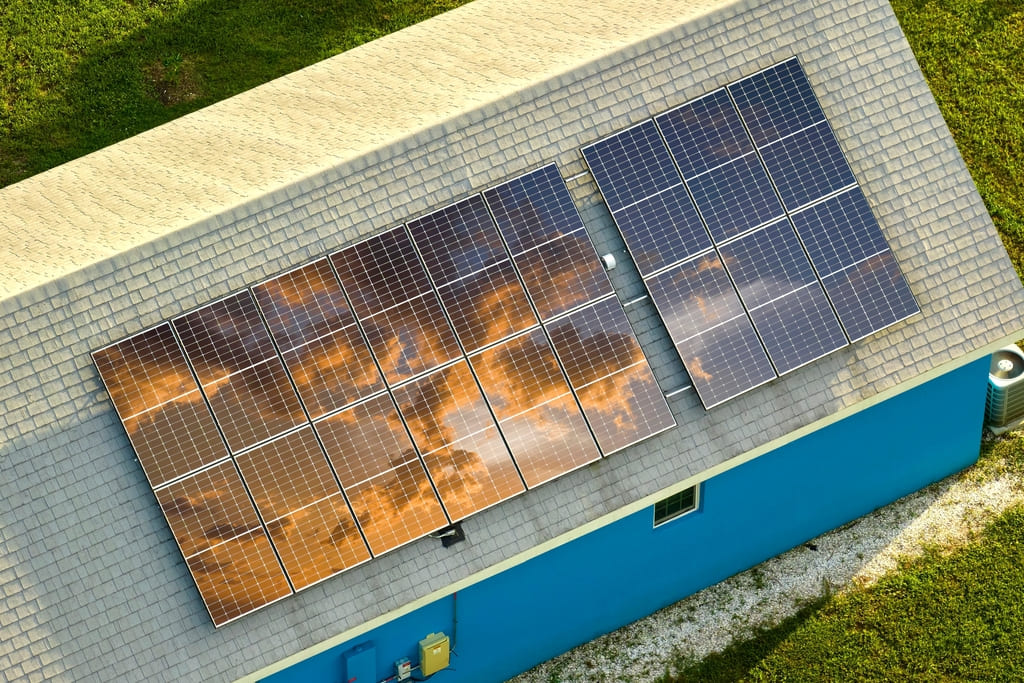In the wake of natural disasters, access to reliable power sources is crucial for hospitals and schools. The U.S. Solar Panel Funding Program aims to address this need by providing financial support for the installation of solar panels in post-disaster areas.
But what are the eligibility requirements for this program? And what are the benefits of utilizing solar energy in these critical facilities? Despite the numerous advantages, challenges such as infrastructure damage and limited resources remain.
Let’s explore how solar panels are funded and installed, as well as some success stories and the future of solar panel funding for post-disaster areas.
Key Takeaways:
- Solar panels provide a reliable power source for post-disaster hospitals and schools, ensuring critical facilities remain operational during emergencies.
- Government grants, private donations, and non-profit organizations are funding and installing solar panels in disaster-prone areas, promoting sustainable and resilient communities.
- Solar panel funding is being successfully implemented in disaster-affected regions such as Puerto Rico, California, and Florida, showcasing the potential for future expansion and impact.
What Is The U.S. Solar Panel Funding Program?
The U.S. Solar Panel Funding Program aims to enhance energy resilience in public buildings and infrastructure by providing funding for the installation of solar panels.
The main objectives of the program include reducing dependency on traditional energy sources, promoting sustainability, and mitigating the impact of power outages. By leveraging the capabilities of solar energy, public buildings can become more self-sufficient and environmentally friendly. The scope of the program extends to various government facilities, schools, hospitals, and other critical infrastructure where energy resilience is crucial.
FEMA, in collaboration with other government agencies, plays a key role in facilitating the funding and implementation of solar panel projects. Through strategic planning and allocation of resources, FEMA ensures that public buildings are equipped with the necessary infrastructure to withstand potential disruptions to the power grid. This initiative not only benefits the environment but also enhances the overall security and reliability of essential services.
What Are The Eligibility Requirements For The Program?
The eligibility requirements for the Solar Panel Funding Program involve specific criteria related to disaster history, building type, and location to determine aid eligibility.
Disaster history plays a crucial role in assessing eligibility for funding assistance. Areas prone to frequent natural disasters are often prioritized for aid as these regions face higher risks of damages that impact their energy infrastructure.
The type of building is a significant factor in determining eligibility. Buildings with sustainable construction features may be more likely to receive funding support as they align with the program’s objective of promoting disaster resilience.
The location of the property is vital as funding assistance is often directed towards areas identified as high-risk zones, encouraging efforts to build more resilient communities.
Location
The location factor in the Solar Panel Funding Program assesses the geographic placement of buildings within the jurisdiction of local and state governments to determine the allocation of resources.
Local and state governments play a crucial role in managing infrastructure projects, ensuring that funds are wisely distributed based on the specific needs of different regions. Government oversight in infrastructure development involves monitoring the implementation of projects, maintaining transparency, and adhering to regulatory requirements.
By considering the geographical distribution of buildings, funding can be directed towards areas where solar panels can have the most significant impact in terms of energy efficiency and renewable energy adoption. This strategic approach fosters sustainable development and contributes to reducing carbon footprints at a local and state level.
Type Of Building
The type of building category in the Solar Panel Funding Program classifies structures such as schools, hospitals, and public buildings as priority sites for solar panel installation and construction projects.
This classification plays a crucial role in directing funding towards key infrastructure that can benefit greatly from solar energy implementation. Schools, being centers of education and community hubs, stand to gain not only from reduced energy costs but also from the educational opportunity it presents to students.
Hospitals can enhance their sustainability efforts while ensuring uninterrupted energy supply for critical services.
- Public buildings, like government offices and libraries, can showcase environmental leadership through the adoption of solar technologies. Solar installations on these buildings not only reduce operational expenses but also contribute to a cleaner and more sustainable environment.
Disaster History
Assessing the disaster history of locations is crucial in the Solar Panel Funding Program to prioritize areas prone to natural disasters, climate shocks, and billion-dollar disaster events for solar panel installations.
Incorporating the data on past disasters provides valuable insights into the vulnerability of different regions, enabling more informed decisions on where to allocate resources for solar panel projects. By considering the frequency and intensity of historical calamities, assessors can identify areas that require urgent attention to build resilience against future disasters. This proactive approach not only enhances the effectiveness of solar panel installations but also contributes to overall disaster resilience and risk management strategies.
What Are The Benefits Of Installing Solar Panels In Post-Disaster Hospitals And Schools?
Installing solar panels in post-disaster hospitals and schools provides a reliable power source, reduces energy costs, and lowers greenhouse gas emissions, enhancing energy efficiency and sustainability.
By harnessing solar energy, these institutions can operate critical equipment uninterrupted during emergencies, ensuring the safety and well-being of patients and students. The reduced dependence on traditional energy sources leads to substantial cost savings over time, enabling these establishments to allocate more resources towards improving healthcare and educational services.
The use of solar power also aligns with initiatives promoting environmental preservation, contributing to energy resilience and sustainability goals. It helps reduce the carbon footprint and combat climate change, making a positive impact on the local community and setting an example for adopting clean, renewable energy sources.
Reliable Power Source
Solar panels offer hospitals and schools a reliable power source that reduces dependency on the grid, promotes renewable energy utilization, and supports energy projects for long-term sustainability.
By harnessing the abundant solar energy, these institutions can ensure a consistent and clean power supply, contributing to energy resilience in the face of potential grid failures or disruptions. The shift towards sustainable energy solutions not only decreases carbon footprint but also strengthens the overall infrastructure resilience of crucial facilities such as hospitals and schools.
The implementation of solar panels helps in reducing operational costs in the long run, allowing institutions to allocate resources to enhance core services and facilities. Solar energy projects not only offer monetary savings but also pave the way for a greener and more eco-friendly future.
With the integration of renewable energy sources like solar panels, hospitals and schools are at the forefront of sustainable development, setting a positive example for the community and fostering a culture of environmental responsibility.”
Cost Savings
The installation of solar panels in post-disaster hospitals and schools leads to significant cost savings through reduced electricity expenses and potential reimbursement mechanisms, leveraging funding to drive sustainable energy practices.
Plus cost savings, the implementation of solar panel systems can also open up opportunities for financial incentives and support. Government rebates and tax incentives play a crucial role in offsetting the initial investment costs. Sustainable energy initiatives often qualify for grants and soft loans designed to promote eco-friendly practices in public institutions like hospitals and schools.
Environmental Impact
The environmental impact of solar panels in hospitals and schools includes the reduction of greenhouse gas emissions, contributing to mitigating the effects of the climate crisis and fostering sustainability in the face of environmental challenges.
Solar panel installations not only provide clean energy but also help in minimizing the reliance on traditional fossil fuels, thus decreasing the carbon footprint of these institutions. By harnessing renewable energy sources like sunlight, hospitals, and schools can significantly lower their operational emissions, thereby playing a crucial role in the global efforts to combat climate change.
The use of solar panels promotes a shift towards a more environmentally sustainable future by showcasing the feasibility and benefits of renewable energy adoption in large-scale facilities. These initiatives serve as impactful examples of responsible environmental stewardship, inspiring other organizations to follow suit and embrace cleaner energy alternatives.
What Are The Challenges Of Implementing Solar Panels In Post-Disaster Areas?
Implementing solar panels in post-disaster areas faces challenges such as damaged infrastructure, adherence to local regulations, and resilience against extreme weather conditions.
Infrastructure damage, like destroyed rooftops or unstable structures, can hinder the installation of solar panels, requiring additional time and resources for repairs.
Navigating complex regulatory frameworks in these regions poses a significant barrier, as understanding and adhering to local laws and permits are crucial for successful deployment.
To address resilience against extreme weather events, incorporating robust design features such as reinforced mounting systems and backup power storage becomes imperative.
Infrastructure Damage
Infrastructure damage poses a significant challenge in implementing solar panels in post-disaster areas, requiring extensive repairs and upgrades to enhance resilience against future disasters and adapt to changing climate conditions.
When a disaster strikes, the already fragile infrastructure faces the risk of further deterioration, hindering the installation of solar panels that could provide sustainable energy solutions. This damage not only disrupts the energy supply but also increases the vulnerability of communities to future calamities.
Without timely restoration and improvements, the full potential of solar energy cannot be realized in these areas. Therefore, investing in infrastructure redevelopment and incorporating climate adaptation measures are crucial aspects of promoting renewable energy sources and enhancing disaster resilience.
Limited Resources
Limited resources, including funding constraints and carbon emissions concerns, can hinder the implementation of solar panels in post-disaster areas, necessitating strategic planning and collaboration with federal entities to overcome resource limitations.
Strategic planning plays a crucial role in effectively allocating limited funds and resources for solar panel projects. By carefully mapping out the project timeline, budget, and goals, stakeholders can ensure maximum efficiency and impact. Collaboration with federal agencies such as the Department of Energy can provide access to additional funding opportunities and technical expertise, facilitating the successful implementation of sustainable energy solutions. Prioritizing the mitigation of carbon emissions through the use of renewable energy sources like solar power is essential for achieving long-term environmental sustainability.
Local Regulations
Adhering to local regulations and legislation is essential in implementing solar panels in post-disaster areas, ensuring compliance with aid eligibility criteria and government mandates for sustainable energy projects.
This regulatory compliance not only ensures that the solar panel installations meet safety standards but also contribute towards long-term environmental sustainability. Legislation plays a crucial role in shaping the solar energy landscape, providing guidelines for proper installations, maintenance, and usage. Understanding aid eligibility requirements is equally important as it determines the availability of financial support for solar projects. Government regulations set the framework for responsible energy consumption, driving the adoption of renewable energy sources like solar power.
How Are The Solar Panels Funded And Installed?
Solar panels are funded and installed through a combination of government grants, private donations, and collaborations with non-profit organizations, supporting energy projects and sustainability initiatives.
Government grants play a crucial role in kickstarting solar projects by providing financial incentives to individuals, businesses, and communities looking to shift towards renewable energy sources. These grants often cover a significant portion of the installation costs, making solar energy more accessible and affordable.
On the other hand, private donations from environmentally conscious individuals or organizations contribute to expanding solar energy infrastructure and promoting a greener economy. These donations can be directed towards specific solar initiatives or general sustainability efforts.
Partnerships with non-profit entities bring together expertise, resources, and community support to implement large-scale solar panel installations. These collaborations leverage the strengths of each partner to maximize the impact of solar projects and advance sustainable practices.
Government Grants
Government grants play a vital role in funding solar panel projects, with initiatives supported by federal funding programs like the Inflation Reduction Act to promote renewable energy adoption and carbon emission reduction.
These grants not only provide financial support but also incentivize businesses and individuals to invest in clean energy solutions. Federal initiatives like the Investment Tax Credit further encourage the expansion of solar energy projects, making them more accessible to a wider audience.
- Initiatives such as the Solar Energy Technologies Office (SETO) focus on advancing research and development in solar technology, driving innovation within the industry.
- Government grants are crucial in helping to accelerate the transition to a more sustainable energy future, reducing our reliance on fossil fuels and combatting the effects of climate change.
Private Donations
Private donations serve as a valuable source of funding for solar panel installations, fostering community support and accelerating the transition to renewable energy solutions in post-disaster areas.
Community engagement plays a crucial role in ensuring the success of these projects, creating a sense of ownership and responsibility among local residents. Through private sector contributions, a sustainable infrastructure can be built, paving the way for long-term energy resilience and reduced carbon footprints. The collaboration between public and private entities also strengthens the overall impact of these initiatives, addressing various environmental challenges and promoting a cleaner, greener future for generations to come.
Non-Profit Organizations
Collaborations with non-profit organizations facilitate the funding and installation of solar panels in post-disaster areas, leveraging resources and expertise to enhance infrastructure resilience and meet aid eligibility criteria.
These collaborative efforts involve various entities working together to ensure the successful implementation of sustainable energy projects after disasters. Non-profit organizations play a vital role in mobilizing necessary funds and technical support to make solar panel initiatives a reality. By aligning with specific aid eligibility requirements, these partnerships can have a more significant impact on building disaster-resilient communities. Resource mobilization is a key aspect of these partnerships, ensuring that all stakeholders are actively involved in the process.
What Are The Success Stories Of The Program?
The Solar Panel Funding Program has witnessed notable success stories in locations like Puerto Rico, California, and Florida, where solar panels have played a crucial role in resilience against weather disasters.
In Puerto Rico, after the devastation caused by Hurricane Maria, solar panels were instrumental in providing reliable electricity to communities when the traditional grid was down. This showcased the importance of alternative energy sources in disaster recovery efforts.
Similarly, in California, where wildfires have been a recurrent threat, solar panels have proven to be a sustainable solution for both energy needs and resilience measures. They have helped minimize disruptions and provided clean power even during emergencies.
In Florida, a state prone to hurricanes, solar panels have not only reduced electricity bills for households but also served as a reliable energy source during storms, contributing to the overall climate resilience of the region.
Puerto Rico
Puerto Rico’s experience with solar panels showcases the transformative impact on energy projects, addressing climate change challenges and enhancing energy resilience in the aftermath of natural disasters.
The utilization of solar panels has played a pivotal role in diversifying Puerto Rico’s energy mix, reducing dependency on traditional fossil fuels, and fostering greater energy independence. By harnessing the abundant sunlight that Puerto Rico receives, these renewable energy sources have not only helped in combating climate change but have also provided a sustainable solution for the island’s energy needs. The deployment of solar panels has been instrumental in bolstering disaster recovery efforts, ensuring a more reliable and resilient energy infrastructure for the future.
California
California’s adoption of solar panels exemplifies renewable energy leadership, with government support and funding initiatives driving sustainable energy practices and enhancing environmental sustainability across the state.
Amidst the sun-kissed landscapes of California, solar panel integration has emerged as a shining beacon of progress in the realm of renewable energy. The state’s commitment to solar power has not only reduced its carbon footprint but also paved the way for a more sustainable future. With innovative funding mechanisms and robust government backing, California has positioned itself as a trailblazer in the transition towards cleaner and greener energy sources. This strategic investment in solar technology is not only benefiting the environment but also bolstering energy independence and resilience in the face of global challenges.
Florida
Florida’s resilience efforts through solar panel installations have bolstered disaster preparedness against extreme weather events, aligning with disaster agency recommendations and fostering energy resilience in the state.
By strategically incorporating solar panels, Florida has diversified its energy sources, reducing dependency on traditional grids during crises.
The collaboration between state agencies and solar industry stakeholders has facilitated the swift response and recovery mechanisms post-disaster.
Effective utilization of solar energy has not only minimized carbon footprint but also enhanced community resilience, reinforcing infrastructures against future calamities.
What Is The Future Of Solar Panel Funding For Post-Disaster Areas?
The future of solar panel funding for post-disaster areas looks promising under the Biden administration’s focus on combating the climate crisis and enhancing aid eligibility criteria for sustainable energy projects.
President Biden’s commitment to climate action has brought significant attention to the importance of sustainable energy initiatives, especially in disaster-prone regions. The administration’s efforts to expand aid eligibility criteria for renewable energy projects signal a positive shift towards investing in environmentally friendly solutions.
Climate resilience has emerged as a key priority in funding allocations, driving advancements in solar panel technology and accessibility in areas vulnerable to natural disasters. As government policies continue to evolve, opportunities for funding solar energy projects in post-disaster regions are expected to increase.
Frequently Asked Questions
What is the purpose of the U.S. funds for solar panels for post-disaster hospitals and schools?
The purpose of this initiative is to provide reliable and sustainable energy sources for hospitals and schools in areas that have been affected by natural disasters.
Who is eligible to receive these funds for solar panels?
Hospitals and schools that have been impacted by natural disasters in the United States are eligible to receive these funds.
How much funding is available for solar panels?
The U.S. government has allocated $4 million for this project to provide solar panels for post-disaster hospitals and schools.
How will these solar panels benefit post-disaster hospitals and schools?
Solar panels will provide a reliable source of energy for essential services such as lighting, heating, and medical equipment, even during power outages caused by natural disasters.
What criteria will be used to select recipients for the solar panel funds?
Recipients will be selected based on their location and level of impact from natural disasters, as well as the potential for solar panels to provide essential energy services.
How can hospitals and schools apply for these funds for solar panels?
Applications for the funds will be available through the U.S. government’s designated website. Interested hospitals and schools can submit their applications and supporting documents for consideration.



